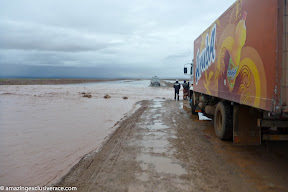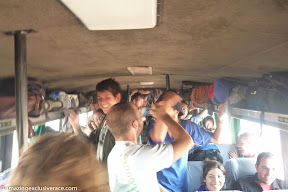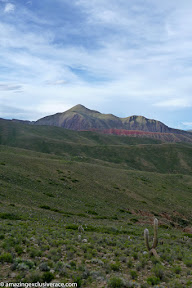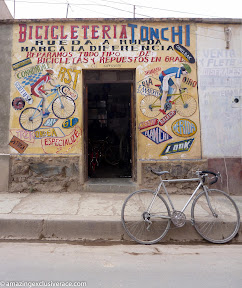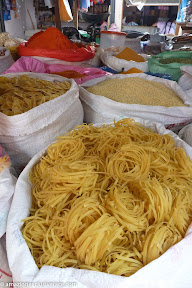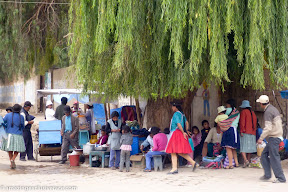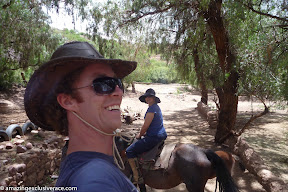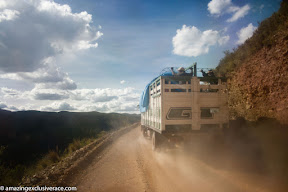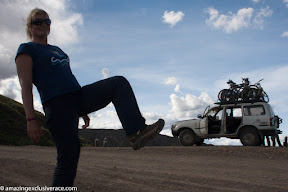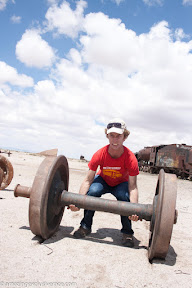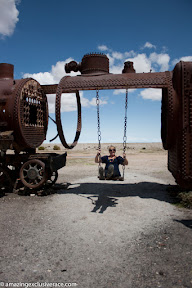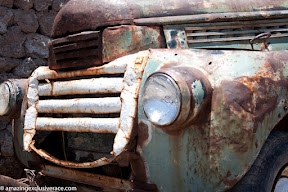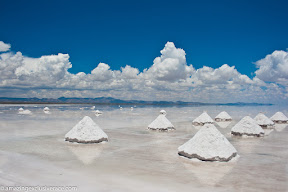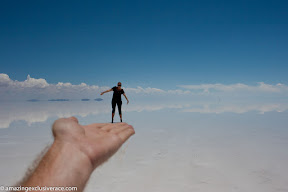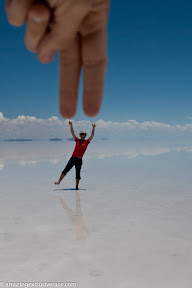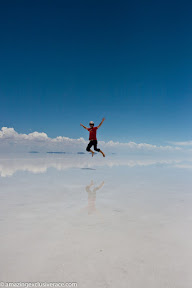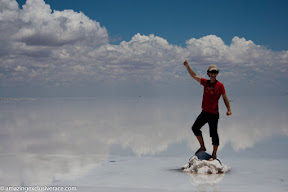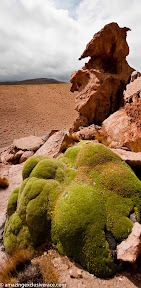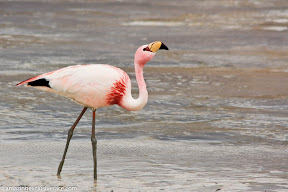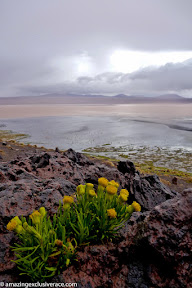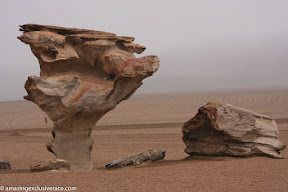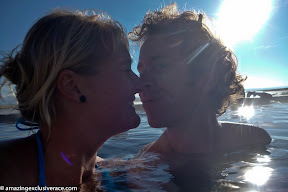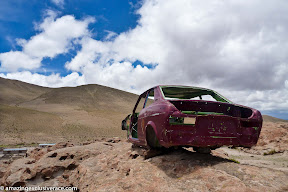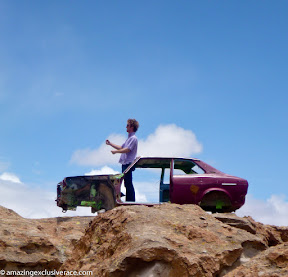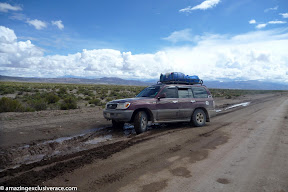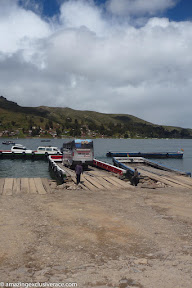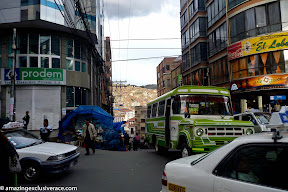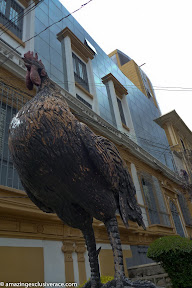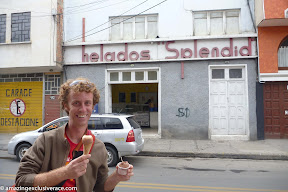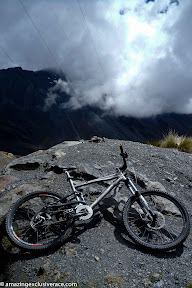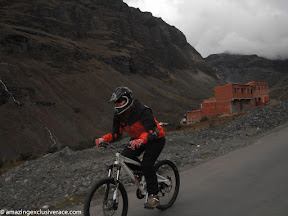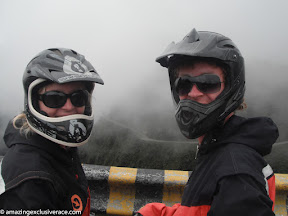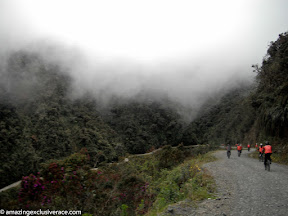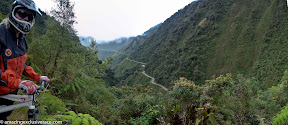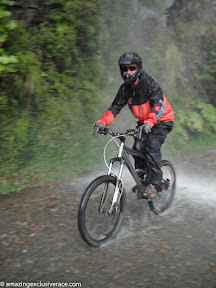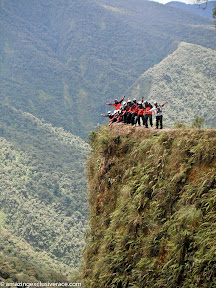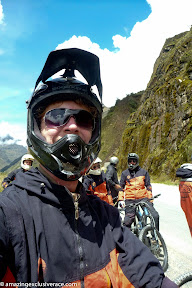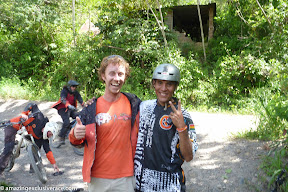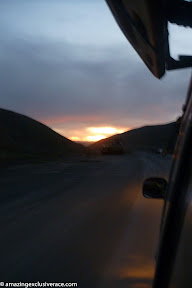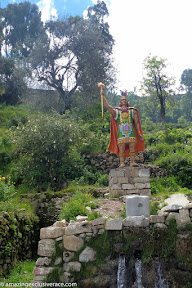As the first team to arrive at the Tupiza pit stop, Simon and Ang were the first to depart at 9am the following day. Their first clue required them to make their way as quickly as possible to the city of Salta in Argentina. Racing out of the pit stop, they jumped into a shared taxi and raced to the border of Bolivia and Argentina at a town called Villazon.
Arriving at the dusty border town an hour later, the team changed the last of their Bolivianos and walked to immigration. As they walked down a long shop lined hill, they noticed a long line of people queuing for something. When they eventually arrived at the international bridge, and after asking a Bolivian border guard, the team reluctantly trudged back up the hill to the back of the queue. There they shuffled along with the crowd of Bolivians, Paraguayans and assorted backpacker types in the long procession to the immigration office. Having changed all their currency and planning to have breakfast across the border, the team was not impressed. They were even more unimpressed with the people who pushed their way to the front of the queue.
 |
 |
| Villazon, a dusty border crossing town | Even the vendors are bored |
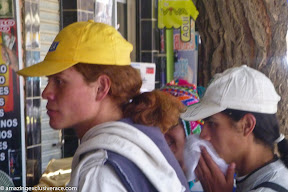 |
| Completing Gail’s photograph a naturally red haired South American challenge. This guy is from Paraguay |
After a marathon six hour wait without food or water, the team finally made it into the office. There they discovered the entire passport control consisted of one guy and a computer. He had to manually enter in everyone’s passport details, so the process was very slow, and given the large number of people, took a very long time. Both Simon and Ang were concerned that with this delay they would be forced to arrive in Salta after dark and may be eliminated from the race.
They finally got their passports stamped and exited Bolivia. They raced across to the Argentine migration control and waited in line for a hour and a half (two people were working in immigration) before entering the country proper. By this stage it was just after five pm in the afternoon. The team ran over to the taxi stand and took a taxi to the nearby bus station. There they bought tickets to Salta, with a transfer in Salvador de Jujury, for a journey time estimated to be six hours long.
The bus trip was relatively uneventful, and they changed with little issue. By the time they reached Salta it was one am. The team was exhausted but still needed to find accommodation. They took a taxi into the centre of the city and found a hostel. They slept for a few hours before checking out in the morning and then into a better hostel.
Still tired and hungry, the team walked through the rain back into town. For the first time during their trip since the US, they were able to withdraw a respectable sum of money from a Citibank branch. This meant they would be able to save on bank fees and would not need to visit the ATM again until at least a week later. Happy with this and the modernity of Argentina (particularly when contrast with Bolivia), the team had their first steak lunch.
Upon exiting the restaurant, within moments, someone pick pocketed Simon. After asking back at the restaurant in case anyone had seen something, they returned to the hostel to lock the card, then returned to the police station where they completed a police report. With this unfortunate development, and after dealing with the insurance paperwork, the team were issued with a new clue and set off to the bus station.
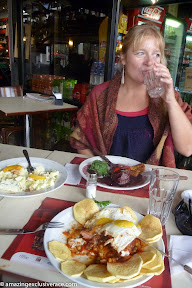 |
| Ang and Simon enjoy a delicious Argentina steak lunch |
Their new clue provided by Mary was a detour that required them to make their way as rapidly as possible into the heart of Argentine Gaucho land to Sam’s farm. To do this they would take an evening bus to the town of Resistencia and continue on to nearby Corrientes. Tickets were purchased and after dinner, the team returned to their hostel to spend the night. There they chatted with a Team Argentina and they were told that Salta is a hotspot for pick pockets. Simon and Ang were sad that this information had been provided too late.
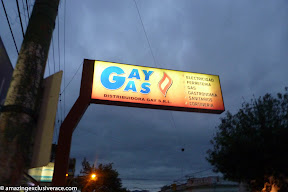 |
| Happy gas |
The next day was low key and after eating some Argentine empanadas and Tamales, the team raced to the bus station for the overnight bus to Resistencia. This semi-cama (semi bed) ride was not totally uncomfortable, but the team was glad to arrive in Resistencia early in the next morning. They quickly changed to another bus going on to Corrientes. Arriving there, they raced out of the bus station and rapidly found a taxi.
 |
| Completing the eat empanadas challenge at the Patio de la Empanada |
They explained they wanted to go to Sam’s farm and gave the directions provided in the clue, but were told while they were in the right province, they were in the wrong town! Corrientes city, the capital of the Corrientes province is located approximately 300km north of the town of Mercedes (which, by using the directions that included reference to the local football club, the taxi driver and friendly fly fishing guide said was the actual destination). With this new information, and given they were in South America, the team set about confirming the actual location of Sam’s farm.
Both Simon and Ang were once again worried they would be eliminated due to this costly delay as if the information was correct, their best option would be another five hour bus ride, which wasn’t leaving until later in the day around midday. Thanks to a friendly information desk lady, the team was able to get in contact with Sam and confirm the town he actually lived was indeed Mercedes and that he would meet the team when their bus arrived a little after five pm, approximately 24 hours after they left Salta.
The bus ride to Mercedes was long and boring. Simon and Ang both marvelled at the similarities of the Corrientes cattle country with the farm land back in Australia and tried to nap. Eventually their bus pulled into the Mercedes bus station where they met Sam and were driven to Sam’s farm, the pit stop for this leg of the race.
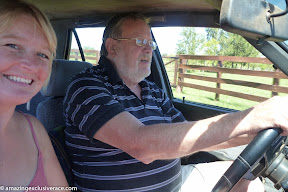 |
| Ang with Sam in the car speeding to his farm and the pit stop |
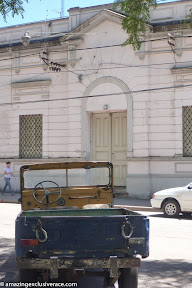 |
 |
| Car parked in Mercedes | Classic car for sale (cause it has a bottle on it) |
 |
| Panorama of Sam’s farm house |
In a post race interview Simon and Ang once again expressed their anger at the pick pocketing incident and but were glad neither was hurt. They both vowed to be smarter with their decisions in the future to get better cheaper accommodation and activities to help recoup the lost money. They laughed at the mix up with destination, but were glad that this mistake didn’t cost them the race.

